Racial History & Somali Immigrants in St. Cloud. Islands in the stream.

 The Herd Boy, painted by Frederick Remmington in 1905, depicts the struggle surviving the harsh winter. A brief history of Upper town, St. Cloud. It’s an area of St. Cloud now referred to by many, right or wrong, as Somaliville. It’s just a couple blocks west of the trainyard, making it a tough area of town long before the Somalis arrived. Like most poor immigrants, the Somalis settled in an area where the rent was cheap, as did poverty stricken German Catholics before them. Few St. Cloud residents realize that before the Catholics became the majority in this neighborhood, there were even worse off Africans living in this area of St. Cloud.
The Herd Boy, painted by Frederick Remmington in 1905, depicts the struggle surviving the harsh winter. A brief history of Upper town, St. Cloud. It’s an area of St. Cloud now referred to by many, right or wrong, as Somaliville. It’s just a couple blocks west of the trainyard, making it a tough area of town long before the Somalis arrived. Like most poor immigrants, the Somalis settled in an area where the rent was cheap, as did poverty stricken German Catholics before them. Few St. Cloud residents realize that before the Catholics became the majority in this neighborhood, there were even worse off Africans living in this area of St. Cloud. In 1850, Kentucky General Sylvanus Lowry moved, slaves and all, to Upper town St. Cloud along with a number of other southern slave owners. Lowry became the first Mayor of St. Cloud in 1856.
People in the area opposing slavery got a voice when a young woman who was both an abolitionist and newspaper editor migrated from Pittsburgh to St. Cloud. Jane Grey Swisshelm repeatedly attacked Lowry’s slave practices, and his treatment of the Winnebago Indians, in print. Lowry responded by organizing a "Committee of Vigilance" that broke into Swisshelm's newspaper office and threw her press into the Mississippi river. The vandals left behind a letter, “The citizens of St. Cloud have determined to abate this nuisance for which you have made the ‘Visiter’ a prime specimen (in reference to the St. Cloud Visitor newspaper), fit only for the inmates of brothels, and you seem to have had some experience of the tastes of such persons.” Jane Grey Swisshelm identified the handwriting as that of Sylvanus B. Lowry, Democratic political boss of St. Cloud.
But Swisshelm continued to speak her mind. As Ida B. Wells once said, “The way to right things is to turn the light of truth on them.” Jane and Ida Wells are pictured below.
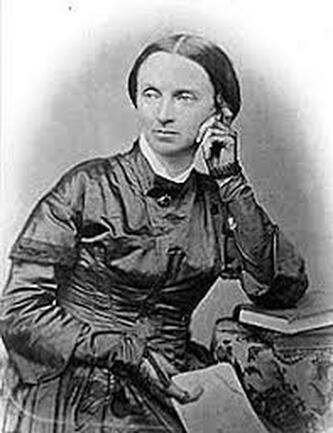
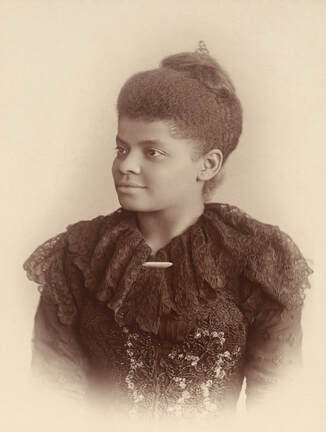 The southerners, and their slaves, left St. Cloud and moved back south when the civil war broke out. Jane Grey Swisshelm moved back east and worked as a nurse for the Union in the Civil War. Jane continued to publish support for Abraham Lincoln. She was hired for government press after the war, but was fired for publicly criticizing Andrew Johnson. In my opinion, the criticism was warranted as it was Johnson who allowed the Jim Crowe laws to emerge - such as vagrancy laws that enabled southern slave owners to arrest Africans for being unemployed, and then force them to work as slaves to pay off their debt to society. (The plantation owners argued that the slavery freedoms didn’t apply, because they weren’t being forced to work because of their race, but instead because they were guilty of a crime.)
The southerners, and their slaves, left St. Cloud and moved back south when the civil war broke out. Jane Grey Swisshelm moved back east and worked as a nurse for the Union in the Civil War. Jane continued to publish support for Abraham Lincoln. She was hired for government press after the war, but was fired for publicly criticizing Andrew Johnson. In my opinion, the criticism was warranted as it was Johnson who allowed the Jim Crowe laws to emerge - such as vagrancy laws that enabled southern slave owners to arrest Africans for being unemployed, and then force them to work as slaves to pay off their debt to society. (The plantation owners argued that the slavery freedoms didn’t apply, because they weren’t being forced to work because of their race, but instead because they were guilty of a crime.)Even though there were slaves in St. Cloud, the majority of Minnesotans were anti-slavery. In1864, active abolitionist and St. Cloud resident, Stephen Miller, was elected Minnesota governor. Miller is the only citizen of St. Cloud ever to hold the office. Miller was a German businessman.
Before that, Upper St. Cloud was a waystation on the Middle and Woods branches of the Red River Trails. Before the railroads, the Red River Trails were the most efficient way to send goods across the Midwest. The trails were used by Metis traders between Canada and St. Paul.
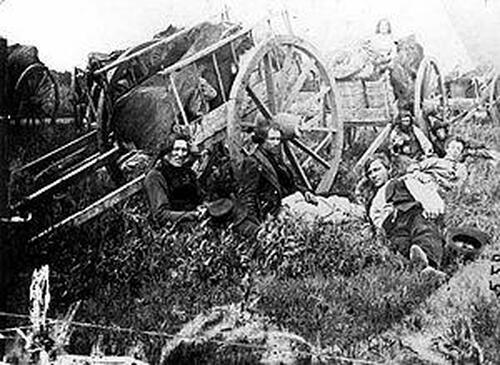 The cart trains often consisted of hundreds of oxcarts. Because nails were unavailable, or expensive, these carts contain no iron at all, being entirely constructed of wood and animal hide. The cart can be dismantled, the wheels covered with bison hides to make floats and the box placed on top. Thus the cart can be floated across streams. Red River carts are strong enough to carry loads as heavy as 1,000 pounds. The Metis, bringing furs to trade for supplies to take back to their rural settlements, would camp west of the city and cross the Mississippi in St. Cloud or just to the north in Sauk Rapids. The Metis were great examples of integration, being half Native American and half European American. There was a Metis colony in the Red River Valley in northern Minnesota. The Hudson Bay company began moving in settlers who were both ant-Metis and anti-Catholic. Ultimately, Canada developed laws to allow the Metis their own schools and to protect Catholics in expression of their faith. The Metis colony moved to Manitoba, right across the border of northwestern Minnesota.
The cart trains often consisted of hundreds of oxcarts. Because nails were unavailable, or expensive, these carts contain no iron at all, being entirely constructed of wood and animal hide. The cart can be dismantled, the wheels covered with bison hides to make floats and the box placed on top. Thus the cart can be floated across streams. Red River carts are strong enough to carry loads as heavy as 1,000 pounds. The Metis, bringing furs to trade for supplies to take back to their rural settlements, would camp west of the city and cross the Mississippi in St. Cloud or just to the north in Sauk Rapids. The Metis were great examples of integration, being half Native American and half European American. There was a Metis colony in the Red River Valley in northern Minnesota. The Hudson Bay company began moving in settlers who were both ant-Metis and anti-Catholic. Ultimately, Canada developed laws to allow the Metis their own schools and to protect Catholics in expression of their faith. The Metis colony moved to Manitoba, right across the border of northwestern Minnesota. Before the Metis were resting on the banks of the Mississippi, the St. Cloud area was the home of various indigenous peoples for thousands of years, including the Anishinaabe, Ottawa and Winnebago/Ho-Chunk peoples. The Anishinaabe are one of the largest groups of indigenous people today. The native American population in the U.S. increased 27% from the 2000 to the 2010 census, with most being Cherokee or Navajo, and 75% integrated (not living on reservations).
I want to come back to where I started. There has been difficulty between Somalis and other ethnic groups in St. Cloud. Last week I met with psychologists from all over the world at a conference at Rice University in Houston, Texas. A psychologist from Kenya asked me if the Somalis were having difficulties getting along with other groups in St. Cloud. When I said there are some issues, she commented, “That doesn’t surprise me. The Somalis have difficulty getting along with all other groups in Africa. I think it’s because Somalia has never had a strong leader. The people are reluctant to take direction from anyone.”
I responded that it’s always come down to individuals to me. There are people of every race I like, and dislike. But I also want to point out that I wouldn’t have included the above quote if I hadn’t heard similar comments voiced by others from Africa. I think the St. Cloud Somali situation will take some creative efforts from all ethnic groups to resolve.


 The Beaver Island Brewing company is hosting my big The I-94 Murders event at 6:00 p.m. on Tuesday, April 23. This is going to be a blast and there is no cost. Stop in and have a cold beverage. I’ll speak from 6:00 to 7:00 about writing True Crime mysteries and you can get questions answered about forensic psychology. Where are the Beaver Islands? The Beaver Islands are the uninhabited islands of the Mississippi around St. Cloud that people love to kayak out to. (They were given their name by explorer Zebulon Pike. People just don't name their kids Zebulon anymore.)
The Beaver Island Brewing company is hosting my big The I-94 Murders event at 6:00 p.m. on Tuesday, April 23. This is going to be a blast and there is no cost. Stop in and have a cold beverage. I’ll speak from 6:00 to 7:00 about writing True Crime mysteries and you can get questions answered about forensic psychology. Where are the Beaver Islands? The Beaver Islands are the uninhabited islands of the Mississippi around St. Cloud that people love to kayak out to. (They were given their name by explorer Zebulon Pike. People just don't name their kids Zebulon anymore.)
Depending on the water level there is somewhere between 15 to 30 islands. I would say 15, but 30 if you count sand bars. There were actually bridges built between some of the islands decades ago, but they now cease to exist. Most are owned by St. Cloud State University, who actually built an athletic field on the largest island at one point, but it’s now grown over. (It wasn’t particularly convenient.) The Beaver Islands were used for camping and picnics for a bit, but that has also been abandoned. The St. Cloud Country Club owns the island closest to the club.
 Alicia Isom is featured on the cover of The I-94 Murders. I had the opportunity to visit the Vincent Van Gogh exhibit at the Fine Arts Museum in Houston, Texas, last week. I love how Van Gogh carefully painted the people in poverty he lived around, including the cracks on their hands. Van Gogh painted a family of potato farmers and spoke of respecting hard-working people who earned their meals. It is interesting to note how the pictures that are the most distorted were painted right before mental health breakdowns that led to asylum placements. It was interesting to read through Vincent’s notes and consider the frustration of painting on rickety easels on windy days. Vincent was close to his brother and worried when his brother started a family that his brother would continue to try to assist him. He ultimately committed suicide and died in his brother’s arms. I found incredible genius in his work and I appreciated that the museum included his notes and identified where he was at when each portrait was painted.
Alicia Isom is featured on the cover of The I-94 Murders. I had the opportunity to visit the Vincent Van Gogh exhibit at the Fine Arts Museum in Houston, Texas, last week. I love how Van Gogh carefully painted the people in poverty he lived around, including the cracks on their hands. Van Gogh painted a family of potato farmers and spoke of respecting hard-working people who earned their meals. It is interesting to note how the pictures that are the most distorted were painted right before mental health breakdowns that led to asylum placements. It was interesting to read through Vincent’s notes and consider the frustration of painting on rickety easels on windy days. Vincent was close to his brother and worried when his brother started a family that his brother would continue to try to assist him. He ultimately committed suicide and died in his brother’s arms. I found incredible genius in his work and I appreciated that the museum included his notes and identified where he was at when each portrait was painted. Thanks for listening,
Frank
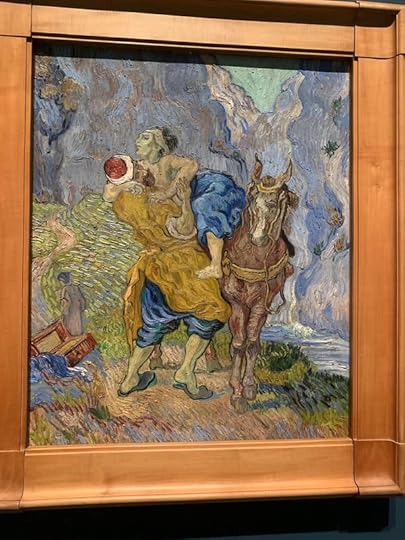 1890 The Good Samaritan by Vincent Van Gogh
1890 The Good Samaritan by Vincent Van Gogh 
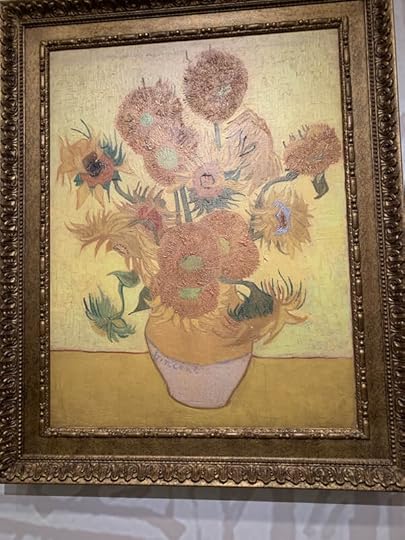

 This was painted right before he was placed in an asylum. The paintings represent his mental health at the time.
This was painted right before he was placed in an asylum. The paintings represent his mental health at the time. 
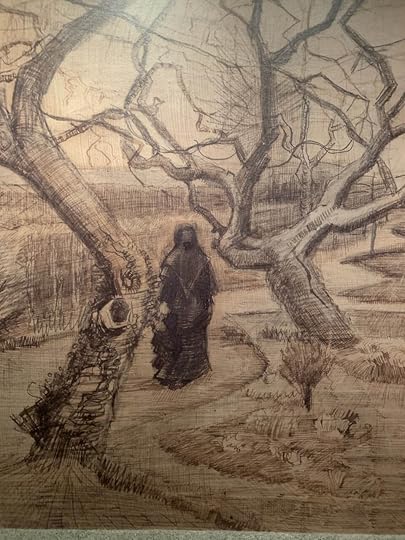
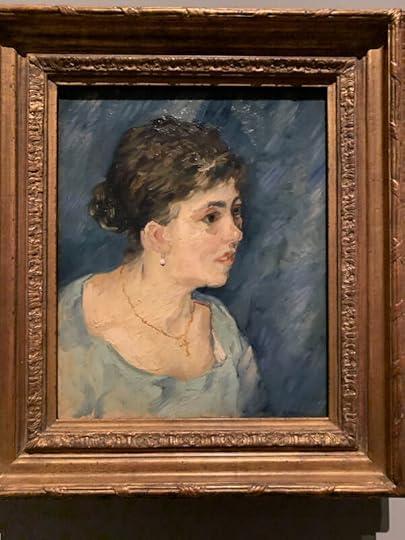



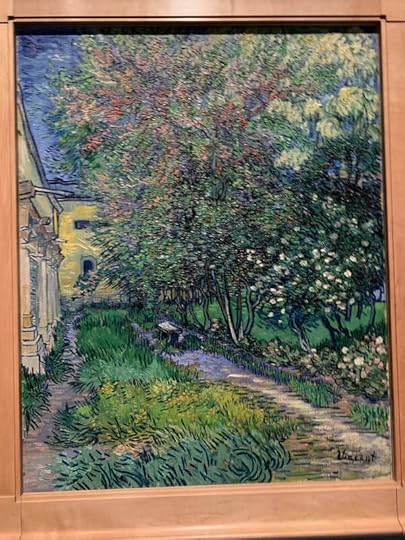
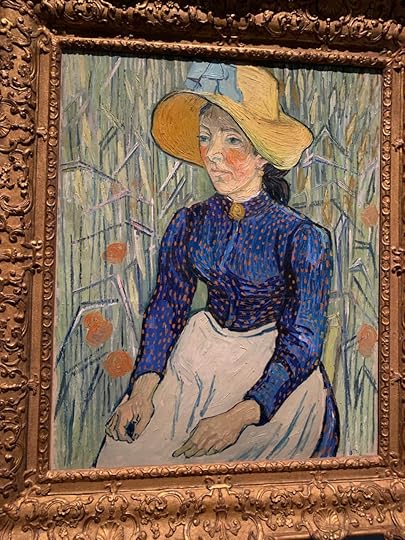
 Self portrait
Self portrait  1874 Twilight in the Tropics by Frederic Church
1874 Twilight in the Tropics by Frederic Church  1900 The End of the Day by William Kendall
1900 The End of the Day by William Kendall  1905 Stained glass art by Louis Tiffany. Tiffany later joined with Arthur Nash to develop the successful “Tiffany’s” stained glass store.
1905 Stained glass art by Louis Tiffany. Tiffany later joined with Arthur Nash to develop the successful “Tiffany’s” stained glass store.  1615 Saint John the Baptist by Jusepe de Ribera. John is frequently depicted as a handsome youth who lived in the desert and focused on prayer and meditation.
1615 Saint John the Baptist by Jusepe de Ribera. John is frequently depicted as a handsome youth who lived in the desert and focused on prayer and meditation. 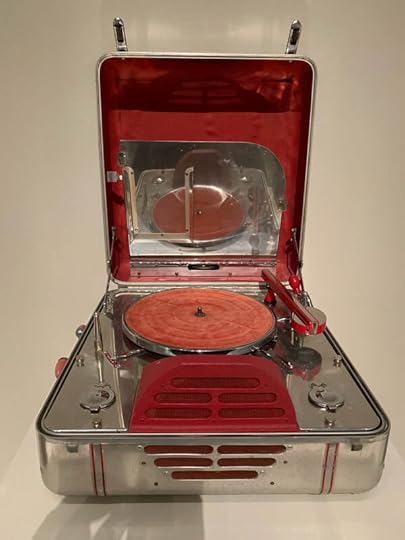 1935 This is a portable phonograph RCA Victor Special Model M, made by John Vassos and Alfred Weiland.
1935 This is a portable phonograph RCA Victor Special Model M, made by John Vassos and Alfred Weiland. 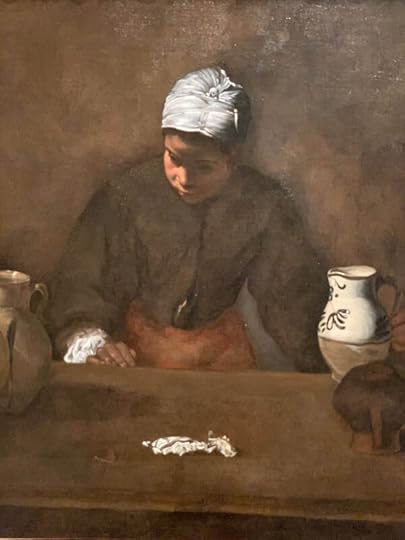 1620 Kitchen Maid by Diego Rodiguez de Silva
1620 Kitchen Maid by Diego Rodiguez de Silva 

Published on April 08, 2019 17:13
No comments have been added yet.



